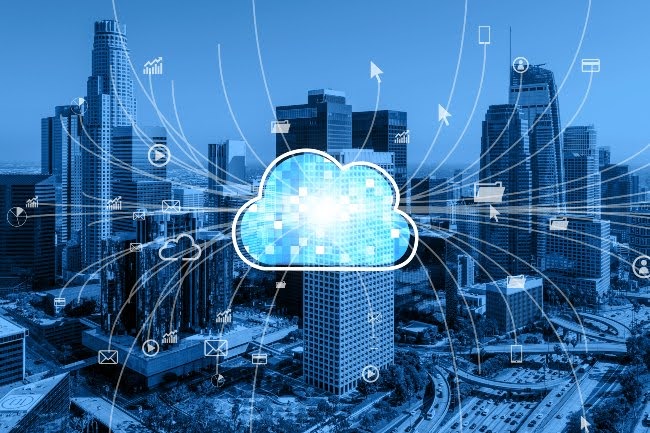Personal and professional data has become one of the most valuable assets. We are not just talking about documents, photos, or emails, but sensitive information, contracts, bank details, business plans, and strategies. In most cases, all of this is stored and managed in the cloud.
However, this convenience has its counterpart: cloud security risks. They are not a simple possibility but a reality affecting companies and individuals. Protecting our data against digital threats is an urgent need, not a technological luxury.
Before getting into the matter, you should know Kartos, our solution for companies that want to maintain control over their cybersecurity. Kartos is a Continuous Threat Exposure Management (CTEM) solution that constantly monitors an organization’s digital environment and detects vulnerabilities before they become a real problem.
What exactly is cloud security?
When we talk about cloud security, we refer to the set of technologies, policies, controls, and procedures that protect systems, data, and infrastructure hosted on cloud platforms.
That is, it is not just about using strong passwords but about ensuring that the cloud service provider, configuration, and users act safely and consciously.
Here, we have everything from encryption systems to access control practices, threat detection, and incident recovery plans.
How does cloud security work?
Cloud security operates at several levels:
- Infrastructure layer: where the hardware and physical servers on which the cloud resides are protected.
- Network layer: responsible for monitoring data traffic and preventing unauthorized access.
- Application layer: This guarantees that the applications do not have flaws that allow attacks.
- Data layer: where encryption, authentication, and backup tools are implemented.
In addition, there are specialized tools that go beyond static protection, as is the case with our solutions, which work under an active cyber surveillance model. This means that they not only protect but also constantly monitor and evaluate the level of exposure to digital risks.

Why should we take cloud security risks seriously?
Cyber attacks are a reality. According to an IBM study published in 2023, the average cost of a cloud security breach is $4.35 million.. And it’s not just large companies that are frequent targets: SMEs and individual users are also frequent targets precisely because they tend to have laxer security measures.
Some of the top cloud security risks include:
1. Unauthorized access
Poor permission management or weak passwords can give cybercriminals access. This is especially serious if the data involved is personal, financial, or confidential.
2. Data loss or leak
Cloud systems can be misconfigured, exposing files. Sometimes, user data has been published inadvertently due to human error or technical oversights.
3. Ransomware attacks
In these attacks, criminals encrypt files stored in the cloud and demand a ransom to release them. Staining that data may be impossible without a good backup and discovery strategy.
4. Misuse of resources
Sometimes, attackers do not seek to steal data but instead use the infrastructure to mine cryptocurrencies or launch other attacks from our account, thus compromising the reputation and resources of the organization.
How to protect yourself: keys to a good cloud security strategy
It is not enough to have good faith or trust that “it won’t happen to me.” Prevention is the only effective barrier against threats. Here are some basic recommendations:
Choose trusted suppliers
Not all cloud platforms offer the same level of security. Ensure the supplier complies with regulations such as ISO 27001 o GDPRand has clear incident protocols. A third-party risk assessment, like the one allowed by Kartos, is key to protecting your value chain and preventing someone else’s weakness from compromising you.
Monitor your exposure
This is where a solution like Kartos is beneficial. Through active external attack surface (EASM) management,Kartos detects exposed assets, vulnerable configurations, or spoofed domains. This allows anticipation phishing or brand impersonation campaigns, which are common in targeted attacks.
Use strong passwords and multi-factor authentication
It seems obvious, but even today, many credential leaks start with a weak or reused password. If you can, enable two-step authentication on all services. Kartos can detect when your credentials are exposed on dark web forums or markets.
Make regular backups
If your information disappears or is hijacked by ransomware, the best way to protect yourself is to have an up-to-date, secure copy. Although Kartos does not replace backup, its constant monitoring helps detect anomalous activity before attacks, which can give you time to act.
Educate your team
Many times, the weakest link in the security chain is the human. One click on a fake message on social networks or a cloned website can be enough to land you in a phishing, fraud, or identity theft campaign.
Enthec’s role in your digital security
In this scenario, Enthec is not just a technology solutions provider. It is a strategic ally in cyber surveillance and active protection. Its CTEM approach allows continuous monitoring of the status of your cybersecurity, offering quick and effective responses.
Through Kartos, designed for companies, you can evaluate each exposed vulnerable point of your digital infrastructure. This tool helps you make informed decisions and act before a problem exists.
Cloud security is your responsibility
It is easy to think of the cloud as an intangible and harmless space. But the truth is that, like any place where value is stored, it has dangers. Cloud security is not optional but an investment in peace of mind, reputation, and continuity.
Solutions like those offered by Enthec, with its proactive approach tailored to businesses and individual users, put you several steps ahead of cybercriminals.
Don’t wait for something to fail to act. Start protecting your data with Enthec today.


